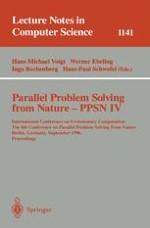1996 | Buch
Parallel Problem Solving from Nature — PPSN IV
International Conference on Evolutionary Computation — The 4th International Conference on Parallel Problem Solving from Nature Berlin, Germany, September 22–26, 1996 Proceedings
herausgegeben von: Hans-Michael Voigt, Werner Ebeling, Ingo Rechenberg, Hans-Paul Schwefel
Verlag: Springer Berlin Heidelberg
Buchreihe : Lecture Notes in Computer Science
Enthalten in: Professional Book Archive
